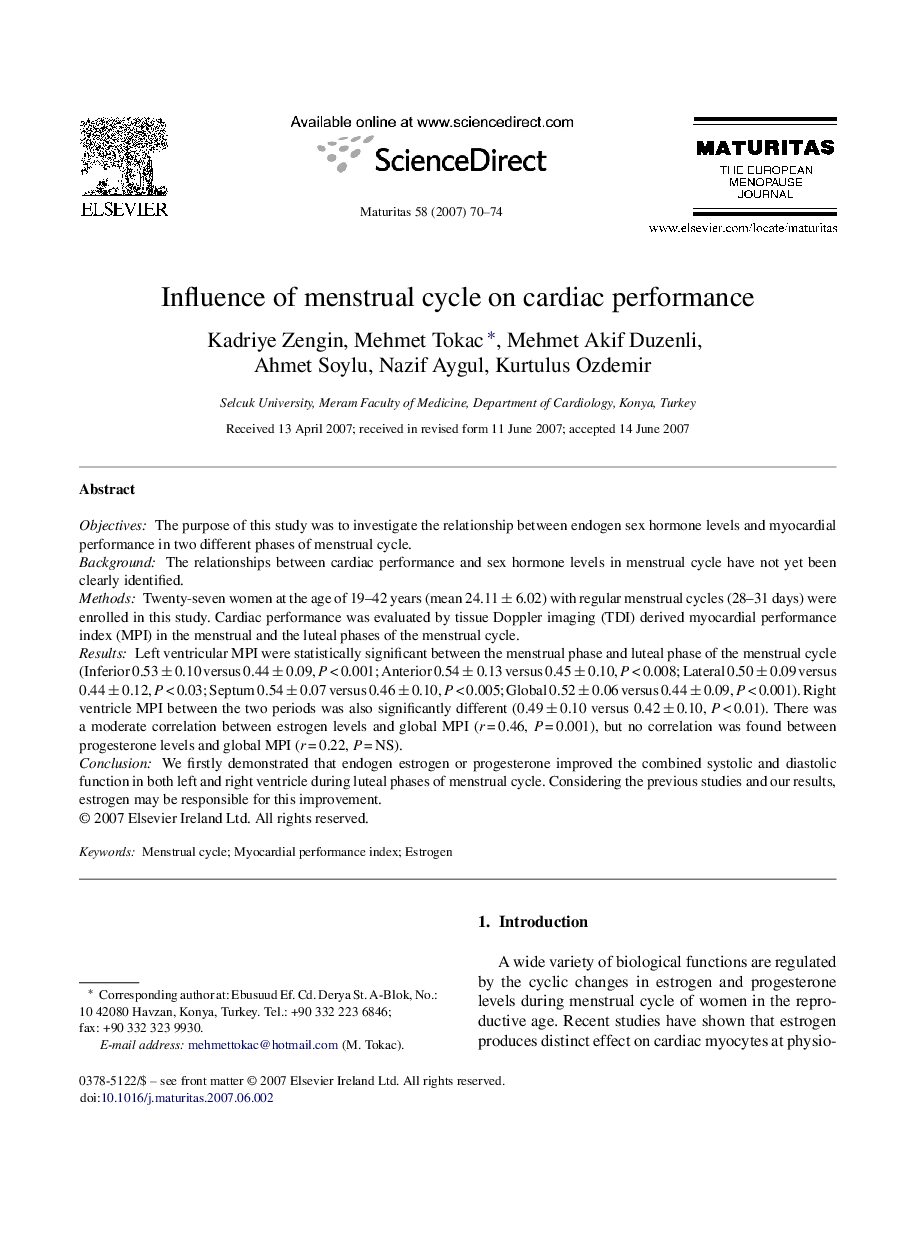| Article ID | Journal | Published Year | Pages | File Type |
|---|---|---|---|---|
| 1918709 | Maturitas | 2007 | 5 Pages |
ObjectivesThe purpose of this study was to investigate the relationship between endogen sex hormone levels and myocardial performance in two different phases of menstrual cycle.BackgroundThe relationships between cardiac performance and sex hormone levels in menstrual cycle have not yet been clearly identified.MethodsTwenty-seven women at the age of 19–42 years (mean 24.11 ± 6.02) with regular menstrual cycles (28–31 days) were enrolled in this study. Cardiac performance was evaluated by tissue Doppler imaging (TDI) derived myocardial performance index (MPI) in the menstrual and the luteal phases of the menstrual cycle.ResultsLeft ventricular MPI were statistically significant between the menstrual phase and luteal phase of the menstrual cycle (Inferior 0.53 ± 0.10 versus 0.44 ± 0.09, P < 0.001; Anterior 0.54 ± 0.13 versus 0.45 ± 0.10, P < 0.008; Lateral 0.50 ± 0.09 versus 0.44 ± 0.12, P < 0.03; Septum 0.54 ± 0.07 versus 0.46 ± 0.10, P < 0.005; Global 0.52 ± 0.06 versus 0.44 ± 0.09, P < 0.001). Right ventricle MPI between the two periods was also significantly different (0.49 ± 0.10 versus 0.42 ± 0.10, P < 0.01). There was a moderate correlation between estrogen levels and global MPI (r = 0.46, P = 0.001), but no correlation was found between progesterone levels and global MPI (r = 0.22, P = NS).ConclusionWe firstly demonstrated that endogen estrogen or progesterone improved the combined systolic and diastolic function in both left and right ventricle during luteal phases of menstrual cycle. Considering the previous studies and our results, estrogen may be responsible for this improvement.
